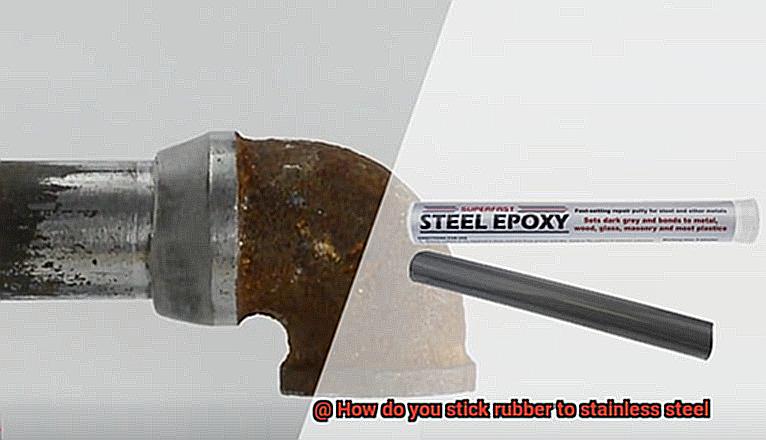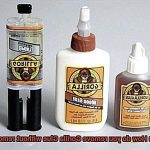You’re itching to know how to stick rubber to stainless steel, huh? Maybe you’ve got some gaskets or seals that need a little bonding action. Well, fear not, my friend. I’ve got all the juicy deets on how to make that rubber cling for dear life to that shiny stainless steel surface.
Now, before we get into the nitty-gritty, let me just say this: it’s all about finding the right adhesive. You want something that won’t give up on you after a few days. We’re talking long-lasting here. Lucky for you, I’ve got a step-by-step guide that will take you from surface prep to adhesive selection and application techniques. Trust me when I say we’re leaving no stone unturned.
But wait, there’s more. I’ve also got some killer tips and tricks up my sleeve to ensure your rubber-stainless steel connection is as solid as a rock. No slipping or sliding here.
So buckle up and get ready to dive headfirst into the world of sticking rubber to stainless steel with confidence. It’s gonna be one wild ride.
Cleaning the Surfaces
Contents
Cleaning surfaces is of utmost importance when it comes to sticking rubber to stainless steel. Thoroughly cleaning both surfaces before applying any adhesive is crucial to ensure a strong and durable bond. Cleaning the surfaces removes dirt, dust, grease, and other contaminants that could hinder the bonding process.
To start, clean the stainless steel surface using a mild detergent or soap mixed with warm water. Use a soft cloth or sponge to gently scrub the surface, paying extra attention to any areas that are particularly dirty or greasy. Rinse the surface thoroughly with clean water to remove any residue from the cleaning solution.
Next, move on to cleaning the rubber material. Depending on the type of rubber, different cleaning methods may be required. For most rubbers, a mixture of mild detergent and warm water should suffice. Gently scrub the rubber surface with a soft cloth or sponge, being careful not to apply too much pressure as it could damage the material. Rinse the rubber thoroughly with clean water to remove any soap residue.
After cleaning both surfaces, it is essential to dry them completely before attempting to stick them together. Moisture can interfere with the bonding process and weaken the adhesive’s effectiveness. Use a clean, dry cloth or towel to ensure that no moisture remains on either surface.
In addition to cleaning, it may also be beneficial to roughen the surfaces slightly to enhance adhesion. This can be done using sandpaper or a sanding block. Lightly sand both the stainless steel and rubber surfaces in a circular motion, creating a textured finish. Be cautious not to over-sand or damage either material.
Once both surfaces are clean and dry, it is time to proceed with applying the adhesive. Choosing the right adhesive is crucial for a successful bond between rubber and stainless steel. There are various types of adhesives available, such as epoxy, cyanoacrylate (super glue), or specific rubber-to-metal adhesives. Consult with a knowledgeable professional or refer to the adhesive manufacturer’s instructions to select the most suitable adhesive for your specific application.
Applying Adhesive
Applying adhesive to stick rubber to stainless steel is a highly effective method for creating a strong and durable bond between these two materials. With the right adhesive and proper application techniques, you can ensure a reliable connection that withstands various environmental conditions.
To begin, thorough cleaning and preparation of the rubber and stainless steel surfaces is essential. This involves removing any dirt, dust, or grease that could hinder the bonding process. A mild detergent or solvent can be used to clean the surfaces effectively.
Once cleaned, it is crucial to dry the surfaces completely. Moisture can interfere with the adhesive’s ability to bond effectively, so ensuring dryness is vital. A clean cloth or allowing the surfaces to air dry will do the job.
For an enhanced bond, lightly sanding both surfaces can be beneficial. This creates a textured finish that promotes better adhesion. A sandpaper or sanding block can be used for this step, gently sanding in circular motions.
Next, follow the manufacturer’s instructions for the specific adhesive being used. Some adhesives may require mixing two components together before application, while others come in ready-to-use forms. Apply a thin, even layer of adhesive on both the rubber and stainless steel surfaces.
Immediately after applying the adhesive, it is important to remove any excess. Excess adhesive can interfere with the bonding process and result in an uneven bond. Carefully wipe off any excess adhesive with a clean cloth or paper towel.
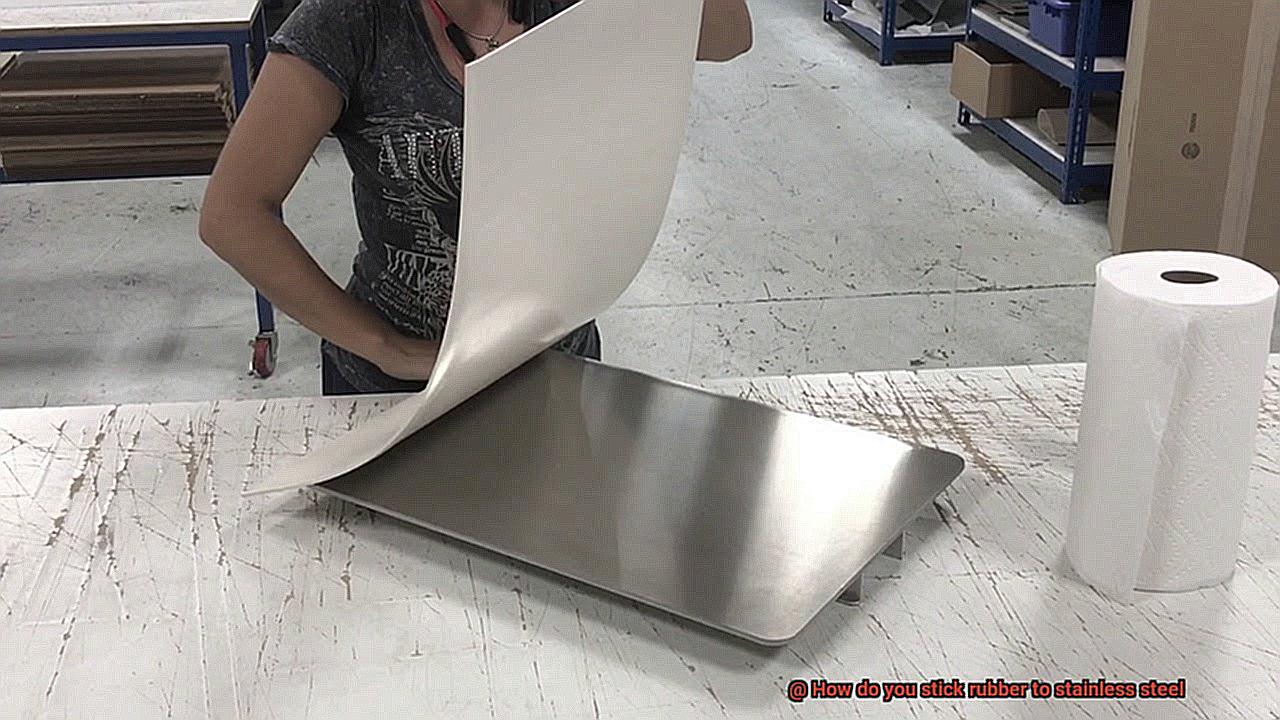
To ensure maximum contact between the surfaces, firmly press the rubber and stainless steel together. Applying pressure helps the adhesive bond effectively. Clamps or weights can be used to hold the surfaces together until the adhesive sets.
The curing time for the adhesive will vary depending on the specific product used. It is critical to allow sufficient time for complete curing before subjecting the bonded materials to any stress or load. This ensures a strong and durable bond.
It’s worth noting that some adhesives may require additional steps or precautions, such as priming the surfaces or using a specific application technique. Always refer to the manufacturer’s instructions for the best results.
Pressing the Rubber onto the Stainless Steel
Pressing rubber onto stainless steel requires precision and attention to detail to ensure a strong and reliable bond between the two materials. Let’s delve into the process, step by step:
Firstly, surface preparation is crucial. To start, meticulously clean the stainless steel surface, leaving no traces of dirt, grease, or contaminants that might impede proper adhesion. Wipe the surface with a gentle detergent or solvent using a clean cloth or sponge. Make sure to thoroughly dry the stainless steel before moving forward.
Next, turn your attention to the rubber. Examine it closely to ensure it is pristine and devoid of any oils, dust, or debris that may interfere with the bonding process. If necessary, cleanse the rubber using a mild detergent or solvent and allow it to air dry completely.
To enhance adhesion, gently roughen the surface of the stainless steel using sandpaper or a wire brush. This simple technique creates a better bonding area for the adhesive. Remember to sand or brush in one direction to prevent any unsightly scratches or damage.
Now comes the adhesive selection stage. It’s essential to choose an adhesive specifically formulated for bonding rubber to stainless steel. Examples of suitable options include epoxy, cyanoacrylate (super glue), and neoprene-based adhesives.
Follow the manufacturer’s instructions meticulously when applying the adhesive. Maintaining precision is key. Apply a thin, even layer of adhesive to either the rubber or stainless steel surface using a brush, roller, or applicator tool. Be cautious not to overdo it; excessive adhesive can lead to unwanted seepage that may compromise the final bond.
With everything properly prepared, it’s time for the pressing process itself. Carefully press the rubber onto the stainless steel surface, starting at one end and gradually working your way across. Apply consistent pressure throughout to ensure full contact between both materials. To smoothen out any air bubbles or wrinkles that may arise during pressing, employ a roller or clean cloth.
Finally, exercise patience and allow sufficient curing or drying time for the adhesive to set. The specific timeframe can vary depending on the adhesive used, so refer to the manufacturer’s instructions for precise guidance. During this curing period, avoid any activities that may disturb or stress the bond, as it’s crucial to achieve optimal adhesion strength.
Curing the Adhesive
Curing the adhesive is a crucial step in achieving a strong and durable bond between rubber and stainless steel. The type of adhesive used and the curing time can significantly impact the quality and longevity of the bond. Here are some key points to consider:
Adhesive Selection:
- Choose the right adhesive specifically designed for bonding rubber to metal surfaces.
- Options include epoxy, cyanoacrylate (super glue), and silicone-based adhesives.
- Consider the unique properties and suitability of each adhesive for your application.
Curing Time:
- Follow the manufacturer’s instructions regarding curing time.
- Curing time can vary depending on the type of adhesive used.
- Proper curing time ensures a strong and durable bond.
Air Drying:
- Let the adhesive naturally dry over a specific period of time.
- Avoid disturbing or subjecting the bonded surfaces to stress during curing.
- Curing time can range from a few hours to several days, depending on various factors.
Heat Curing:
- Some adhesives require exposure to heat for proper curing.
- Use methods like a heat gun, oven, or heat press to apply heat.
- Heat accelerates the curing process and ensures a strong bond.
Environmental Factors:
- Temperature and humidity can affect adhesive curing.
- Extreme temperatures or high humidity levels can weaken bonds.
- Adhere to manufacturer’s guidelines for optimal curing conditions.
Surface Preparation:
- Ensure both rubber and stainless steel surfaces are clean, dry, and free from contaminants or oils.
- Use solvents or sandpaper to create a rough texture for better adhesion.
Using Mechanical Fasteners
Mechanical fasteners are a practical and enduring solution for attaching rubber to stainless steel surfaces. These fasteners provide a reliable bond that can withstand a wide range of environmental conditions and loads, making them an essential tool in various applications.
One commonly used mechanical fastener is the bolt and nut combination. By drilling holes in both the rubber and stainless steel surfaces, bolts and nuts can be used to secure them together. Stainless steel bolts prevent corrosion, while tightened nuts ensure a robust and long-lasting bond. This method is especially useful when the rubber needs to be easily removable or replaceable.
Screws are another type of mechanical fastener that effectively attaches rubber to stainless steel. By drilling pilot holes in both materials and then screwing them together, screws are ideal for connecting rubber gaskets or seals to stainless steel surfaces. This provides an effective barrier against leaks or vibrations.
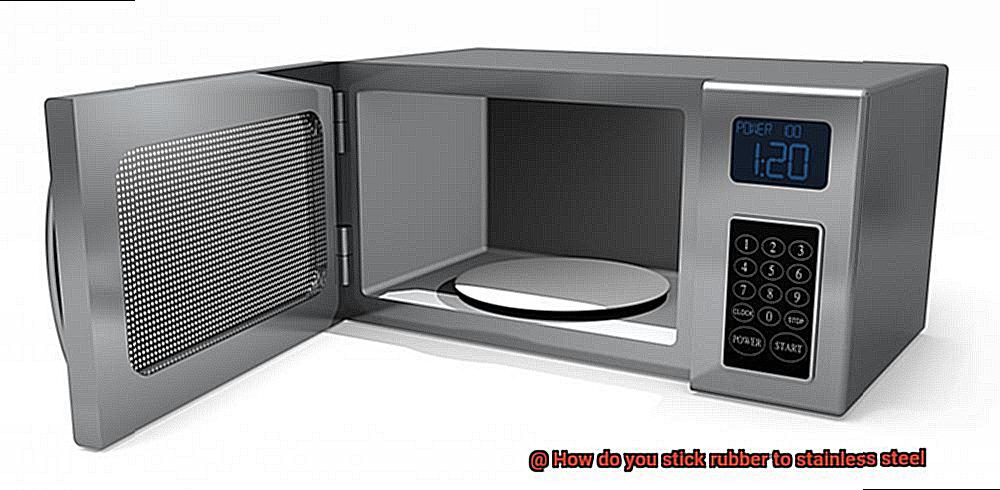
In addition to bolts and screws, other mechanical fasteners such as rivets, clips, or clamps can also be employed, depending on the specific requirements of the application. Rivets offer a secure and permanent bond, making them suitable for high load or vibration scenarios. Clips or clamps, on the other hand, allow for temporary attachment and easy removal or adjustment.
Proper alignment and fit between the rubber and stainless steel surfaces are vital when using mechanical fasteners. Careful marking and drilling of pilot holes, along with appropriate tools and techniques for securing the fasteners, ensure a stable connection. It is also important to consider factors like temperature fluctuations or chemical exposure that may impact the bond’s performance over time.
Using Double-Sided Adhesive Tapes
Using double-sided adhesive tapes to stick rubber to stainless steel offers several benefits. Firstly, these tapes are a popular and convenient option for bonding different materials together. They consist of a layer of adhesive on both sides, ensuring a secure and reliable bond.
One advantage of using double-sided adhesive tapes is their ease of use. Unlike traditional adhesives that require mixing or precise application, these tapes can be simply cut to size and applied evenly on both surfaces. This makes them a time-saving solution for various applications.
Another benefit is the versatility of these tapes. They are available in different formulations and strengths, allowing users to choose the most suitable tape for their specific bonding needs. By selecting tapes labeled as “rubber adhesive” or “high bond,” effective adhesion between rubber and stainless steel can be achieved.
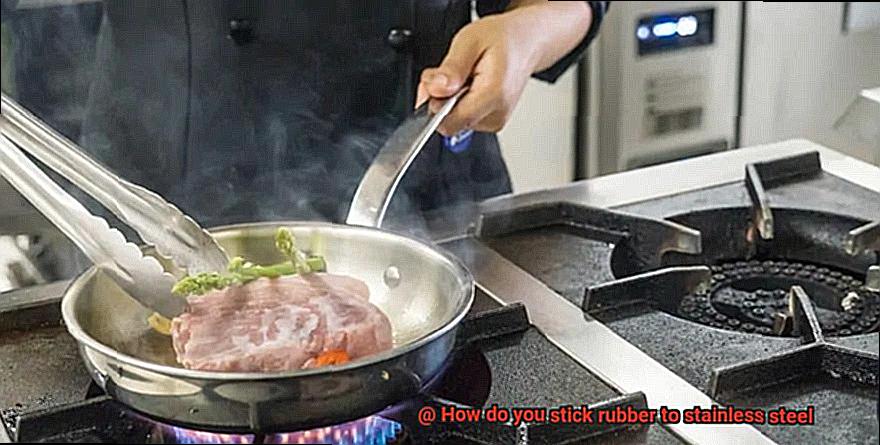
Furthermore, double-sided adhesive tapes provide excellent adhesion on clean surfaces. Before applying the tape, it is essential to ensure that both the rubber and stainless steel surfaces are free from dirt, dust, or grease. Cleaning the surfaces with mild detergent or rubbing alcohol not only improves contact but also enhances the bond strength.
Additionally, these tapes offer the advantage of easy placement. Once applied, they can be pressed firmly to eliminate any air bubbles that may weaken the bond. Applying pressure on the bond and allowing sufficient curing time further enhances the adhesion, ensuring a strong connection between the rubber and stainless steel.
However, it is important to consider the limitations of double-sided adhesive tapes. Extreme temperatures or heavy loads may require alternative bonding methods such as mechanical fasteners or specialized adhesives.
Factors to Consider When Choosing a Bonding Method
Choosing the right bonding method is crucial when it comes to sticking rubber to stainless steel. There are several factors that need to be considered to ensure a strong and durable bond. Here are some key factors to keep in mind:
- Surface Compatibility: The compatibility of the surfaces is of utmost importance. Rubber and stainless steel have different properties, and not all bonding methods are suitable for both materials. It is essential to select a bonding method specifically designed for bonding rubber to stainless steel. This will ensure optimal adhesion and long-term durability.
- Strength Requirements: Consider the strength requirements of the bond based on the application. Some applications may require a strong bond that can withstand high levels of stress, while others may need a more flexible bond that allows for movement. Different bonding methods offer varying levels of strength, so it is important to evaluate the specific needs of your project before making a decision.
- Environmental Factors: The environment in which the bond will be subjected to is another critical factor to consider. Factors such as temperature, humidity, exposure to chemicals, and UV radiation can all affect the performance and durability of the bond. Certain bonding methods may be more resistant to certain environmental conditions than others, so it is vital to choose a method that can withstand the specific conditions your application requires.
- Application Method: The method of application is also an important consideration. Some adhesives require specialized equipment or techniques for proper application, while others may be more user-friendly and easy to apply manually. Consider your resources and capabilities when selecting a bonding method to ensure that you can achieve a successful bond.
- Time Constraints: Time constraints may also play a role in your decision-making process. Some bonding methods require longer curing or drying times, which may not be feasible if you have tight deadlines or need immediate results. On the other hand, some adhesives offer fast curing times, allowing for quick bonding and reduced downtime. Assess your time constraints and choose a bonding method that aligns with your project timeline.
- Cost Considerations: Lastly, cost is an important factor to consider. Some adhesives or bonding methods may be more expensive than others, and it is essential to evaluate your budget and cost requirements. While it may be tempting to opt for the cheapest option, it is crucial to balance cost with performance and durability to ensure that you are choosing a bonding method that provides long-term value.
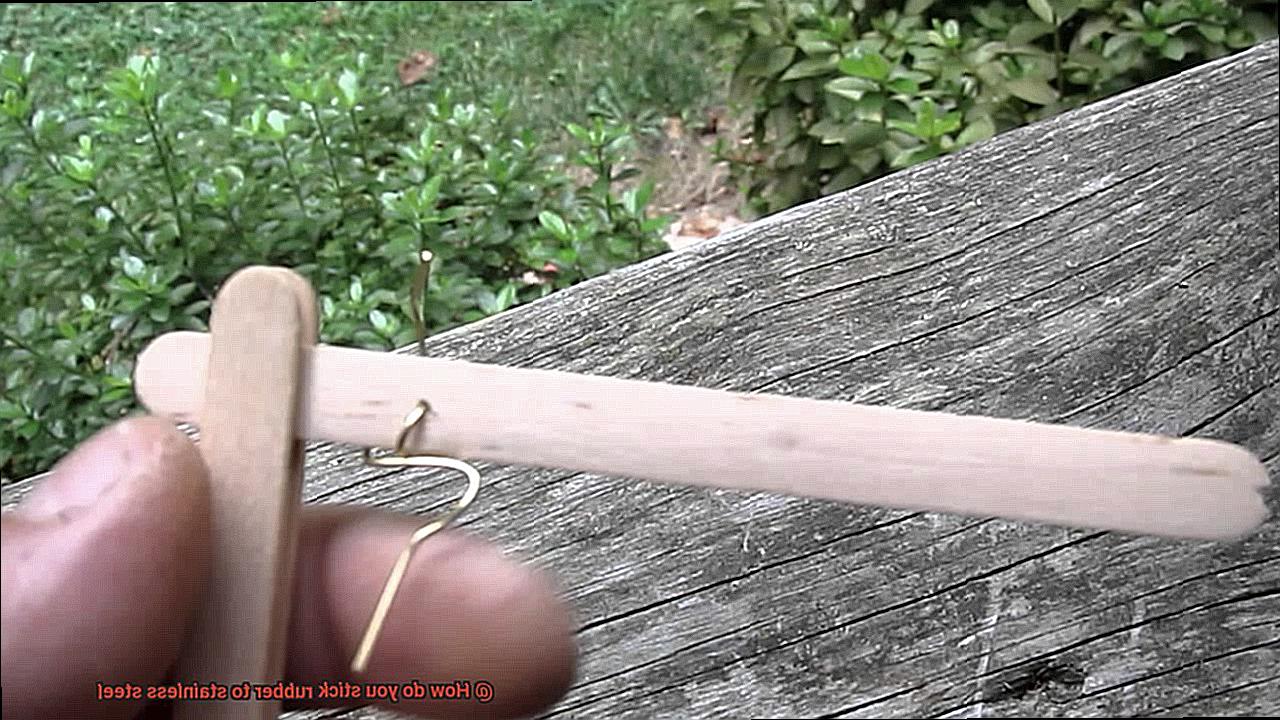
crzEogUOFrs” >
Conclusion
In conclusion, achieving a solid bond between rubber and stainless steel demands meticulous surface preparation, strategic adhesive selection, and precise application techniques. Thoroughly cleansing the surfaces and ensuring their complete dryness is paramount to establishing a robust connection. Additionally, delicately roughening the surfaces can further enhance adhesion capabilities. Opting for a specialized adhesive specifically formulated for rubber-to-metal bonding is indispensable. Commonly used adhesives include epoxy, cyanoacrylate (super glue), or rubber-to-metal adhesives.
Equally important is the application process itself. It necessitates the careful application of a thin, uniform layer of adhesive on both the rubber and stainless steel surfaces. Swift removal of any excess adhesive is imperative. Merging the two surfaces firmly together and utilizing clamps or weights to maintain their alignment until the adhesive sets ensures optimal contact.
The duration required for curing varies depending on the chosen adhesive; thus, adhering to the manufacturer’s instructions is crucial. External factors such as temperature and humidity can influence curing time, making it essential to maintain ideal conditions throughout the process. In some cases, heat curing may be necessary to expedite results.
Alternatively, mechanical fasteners like bolts and screws offer an alternative method for securing a bond between rubber and stainless steel with utmost reliability. Double-sided adhesive tapes provide convenience and versatility but may have limitations in extreme conditions.
When selecting a bonding technique, it is vital to consider various factors such as surface compatibility, strength requirements, environmental influences, application method, time constraints, and cost considerations.

